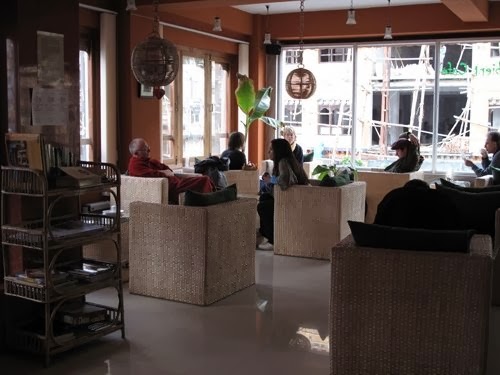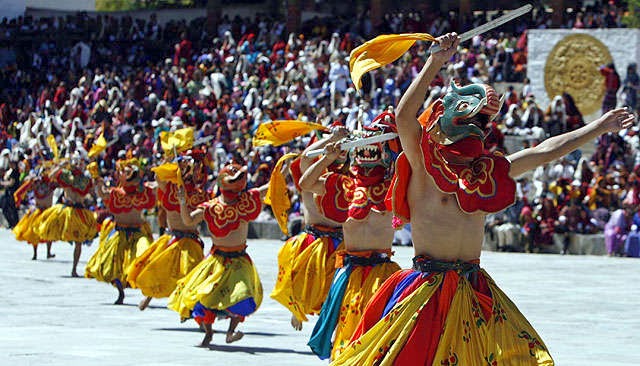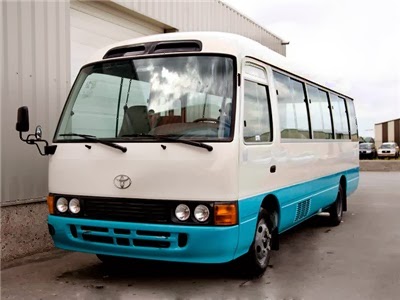Who would have thought this remote little landlocked Himalayan kingdom could offer some seriously quirky and novel experiences which can not only surprise you, but will make you simply fall in love with the country.
**
My list may not feature in any guide book or travel agent’s must-dos, but I think these are some really interesting things to do beyond touristy trails of dzongs (monastries) and single night homestays. These are all based on my own personal experiences in the country.
**
1. Tashi Tagay Drayang, Thimphu (Dance Bar)
These little dance bars, or drayang as they are known in local language, came as real surprise in Bhutan. What was even more suprising was that very few local people knew that drayangs existed and most of those who knew had never visited them or could tell clearly where they were located. Even though the main Thimphu town is pretty much located across a main road and everything is in walking distance, it took us almost an hour to hunt down the place, because no one could clearly tell where it is located.
**
Eventually we found this drayang called Tashi Tagay. There is no hoarding, or sign of a dance bar up a white color residential building. The drayang was located inside this building, in a converted residential flat. These drayangs are completely different from those which exist in Mumbai or even in Thamel street in Kathmandu. These drayangs are sort of ‘traditional’, serve only beer and ofcourse allow you to bring your own snack from the street outside.
**
When I say traditional, it means girls here strictly wear their modest national dress called ‘kira’ and dance to the tunes of mostly Bhutanese love songs. The owner runs this drayang as a charity helping out these girls from remote villages in Bhutan to be able to earn a living. There were about 6-7 dancers and 2 singers (one lady and one man- both of them blind). Apart from a monthly salary, the prime source of earning money for these dancers and singers is by ‘requests’ put up by drayang customers. The owner himself is a singer and doesn’t shy away from going on stage and singing a few local tunes. Girls are friendly and upon talking to them we came to know they come from really far off villages. Most of them have never gone to school. They seem to love dancing and the city life of Thimphu. I cannot help but notice how well they are trained to coax the customers into ‘requesting’ songs or dance. Slowly I realize, they all carry their own diaries where the customer needs to sign and put a request. One song or one dance is for Nu. 100.
**
Ofcourse after noticing us (the only customers for first hour of evening), they even coaxed us into requesting a ‘Hindi dance performance’.
**
We also noticed these drayangs were very much visited by young boys not more than 16 or 17 ..all just killing time, ordering a full bottle of beer costing Nu. 100 and sharing it with friends. Ofcourse, most of them never bothered to request any song or dance. These drayangs, even though not too many in Bhutan, have been part of a debate in Bhutanese political and social circles. Their existence is many a times questioned, as many of us might as well, for these beautiful young girls of some drayangs could very much be on the brink of being pushed into prostitution or might as well already be in it. It is difficult to say.
**
2. Homestay, Haa valley
Homestays would pretty much be on everyone’s itinerary who is visiting Bhutan and is on a lookout for local food and culture. But I highly recommend staying in the homes for more than just one night as that is when the family would eventually open and one can be part of the family activities in real sense.
**
Bhutanese people are very warm and friendly and I happened to stay with this family in remote village called Dumcho in Haa Valley. The family is headed by Ugyen and his wife Dolay, they have two beautiful children, the older son Kinga and younger daughter Yangzom. There is an elderly lady relative also who stays around and almost everyone around in the village somewhat belongs to the same family line. Even though the elders do not speak or understand Hindi/English, communication is not much of a barrier . If you are patient enough with little signs and smiles, you can manage easily. The children, however, speak good English and can be the best guides.
**
I am really glad to have visited this place for this is where the local traditions and food can be savoured at their best. The house is very traditional, made of wood, kitchen is the centre of the household, where all the activities are conducted like watching TV, children doing their homework, sleeping (because kitchen is the warmest part of house) and ofcourse cooking. It is a small village surrounded by crop fields and apple orchards. Walking around the village, by its river stream, through the fields, by the little shacks of bars, vegetable market is simply mesmerising. We were also invited into Ugyen’s father and sister’s home which is just across the street for some tea. Ugyen’s sister, Chimi, also runs a homestay. While both these houses retain the traditional architecture and detailing, small changes have been made for tourists like a Western toilet and very comfortable and thick and cozy mattress for sleeping. There are separate private rooms for guests, while the rest of the family sleeps in the kitchen.
**
On our second evening in the house, there was a whole lot of commotion, for Yangzom was late in submitting her Mathematics assignment in school where she had to prepare several cardboard cut-outs in different Geometrical shapes. Somehow cardboard, scissors , paper and colors were arranged and the whole family including us got together to help her finish the assignment. I closely helped her understand the shapes clearly and in spite of almost six of us working on her assigment, it took us over an hour ! It was great fun. And in return, the family was so generous that they stayed up late that night and prepared a special dish for our breakfast and departure day called ‘Hoento‘ or buckwheat dumplings filled with turnip leaves, chilli and fermented cheese !
**
Now these are the experiences which can never be had on strict guided tours.
Address : Ugyen, Village- Dumcho, Gewog- Issue, District- Haa
Contact: Dodo (Ugyen’s brother who speaks English and communicates on the family’s behalf)
Email: dodoafo@gmail.com / Mobile: +975 1711 1116
3. Festivals in Bhutan
There are several festivals in Bhutan throughout the year and if one can club the holiday with any of the traditional festivals, it can be really insightful. Even though I had not planned it, but my trip happened to coincide with this festival called Tsechu in Thimphu. It was a three day festival and was organised in the Dzong.
There were several performances by masked and heavily dressed men. Not that I understood much of what was exactly going on in terms of performance, but I was just caught up in the magnanimity and simplicity (both) of the event. Everyone was dressed in their fineries and carried a picnic lunch to the venue. The venue was thronged by not just locals but almost all the tourists in town. There were crowds everywhere, yet everything seemed orderly.
**
4. Mini bus rides
Most of the tourists opt for travel agents who would ensure comfortable travel throughout the country in private taxi cars. However, it’s highly recommended to ditch the cars for once and enjoy comfortable mini-bus rides in Bhutan. These are generally Japanese Coasters and very comfortable. What makes the ride interesting is getting to see the local life upfront. Other than reserved seats for passengers, the buses are loaded with apples! They stop every now and then to pick up vegetables from government allotted stall sheds in remote villages or may be courier packets or may be simply because someone wanted to have a quick chat with someone on the road. All this while decent Bhutanese or Hindi music plays in background. The drivers are not shy to talk over their cellphones while navigating mountain’s steep turns, and surprisingly nor does the driver driving from opposite direction at the same turn. It is cheap, comfortable and no matter how many stops they make, you reach your destination well in time.
**
Only issue being that buses are not very frequent in interior Bhutanese sectors. From Paro to Phuentsholing, there is only one departure in the whole day, which is in morning. Therefore it is advisable to book bus tickets a day in advance. I understand the busiest sector is Thimphu-Phuentsholing, with buses running between the two almost throughout the day at gap of about 30 minutes.
**

5. Thimphu Western style eateries/ pubs
When in Thimphu, do not miss the Ambient Cafe on Norzin Lam for a breakfast and chat with very friendly owners and others around. It is located on the first floor of a building overlooking the main Thimphu town street called Norzin Lam. Menu is small and tidy, but more importantly I have to say the ingredients they use in their dishes can’t be any fresher and tastier. The owners are a young couple and they pretty much run the place themselves. This is where we also happened to meet a Buddhist Lama who has been working with people suffering from drug/alcohol addiction. The cafe has also been supporting some people who have suffered in this manner by helping them to learn new kitchen or other related skills. It is a totally a family atmosphere.
There are also a couple of interesting bars/ pubs/ live music restos that one can find on the street opposite the stadium. The places are generally very friendly and though prices are slightly on the steep side, food is good and offers ample variety for a Western palate.
**

6. Authentic and organic Bhutanese food in Thimphu
For savouring authentic Bhutanese food right in the city of Thimphu, one has to visit the Folk Heritage Museum’s restaurant. While the museum itself is interesting, restoring the traditional architecture and artefacts from Bhutan, what’s even better is this restaurant in the same premise. The restaurant is privately owned by this cheerful and friendly lady who also happens to be Bhutan’s first woman police officer. She has been working on this idea of preserving Bhutanese traditional cuisine and therefore this restaurant was born. The restaurant is packed through day and night mostly with foreign tourists. It offers a fixed menu in two options at fixed prices of 250 Nu or 450 Nu. And there is ample serving of food.
**
It is advisable to book a table there in advance at +975 17600736 (10 am to 10 pm)
**
7. Bhutanese local beer and Ara
Bhutan offers primarily two types of locally brewed beer- the white one called ‘Druk’ and a strong one called ‘Druk 1000’ – both, to our amusement, bottled in Indian Kingfisher bottles. Out of curiosity we asked the owner of the bar about it and got to know Bhutan doesn’t have its own bottling plant, therefore all the Kingfisher bottles disposed off near Indian border are brought into Bhutan (legally/illegally ?!) and their own local beer is put into it and repacked. Having said that, I confess the beer tastes good.
**
The other local and traditional drink is Ara made in rural households by fermenting rice. Well these can be packed in just about any bottle. Looks clear like vodka, a little strong on smell and taste both.
**

8. Riverside Cafe in Paro
All the Bhutanese towns and villages are located around a river which cuts through the centre . Strangely on my trip, I could locate few riverside cafes or something similar. Well strange might be to me and other tourists, this looks like a deliberate effort by the government to avoid too much crowding around rivers. Bhutanese rivers are small in width and extremely clean and one can see through them, right to the river bed. However, I was able to locate this little cafe serving only coffee, teas and home-baked cakes by the river. Even though they did not have any river front seating, they happily allowed us to take their portable chairs upto the river promenade where they served us the yummiest peach cake in the Bhutan. This cafe is located just behind Hotel Peljorling (opposite mobile tower). It is a must visit.
**
See all the pictures and full story here..
**
Richa Gupta is based in Mumbai, is an avid traveller and also passionate about writing and encouraging responsible and alternative travel ideas. After having worked in the fashion industry for over six years, she decided to quit and started with a little not-for-profit initiative to help people with travels which not only help support local culture, economy and environment but also offer life changing experiences. Her work and blog can be found at http://thebluedawn.com













